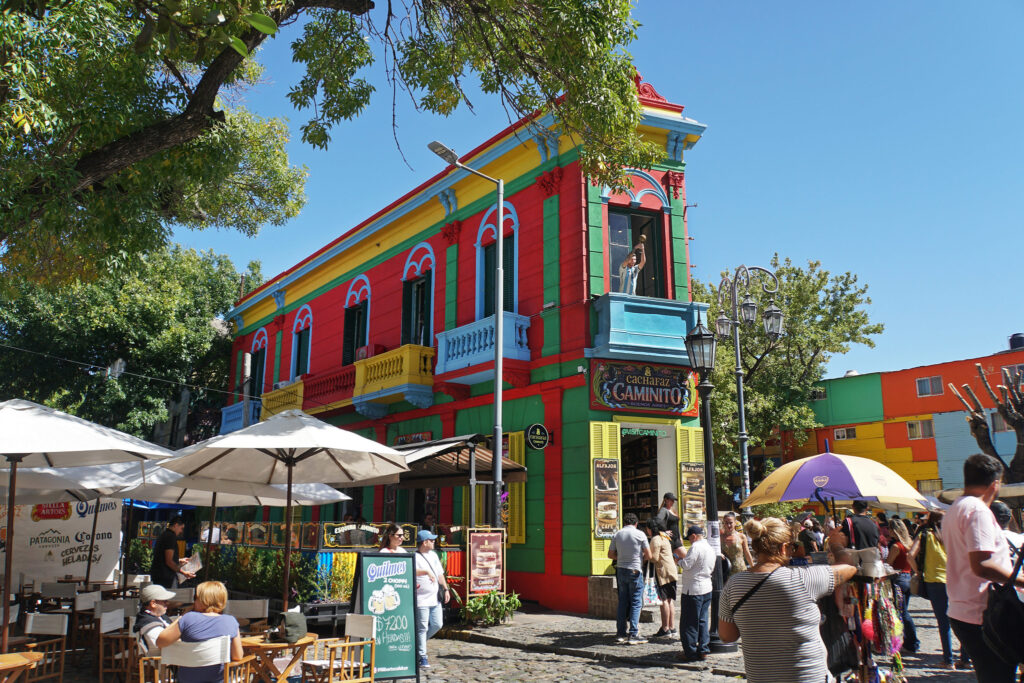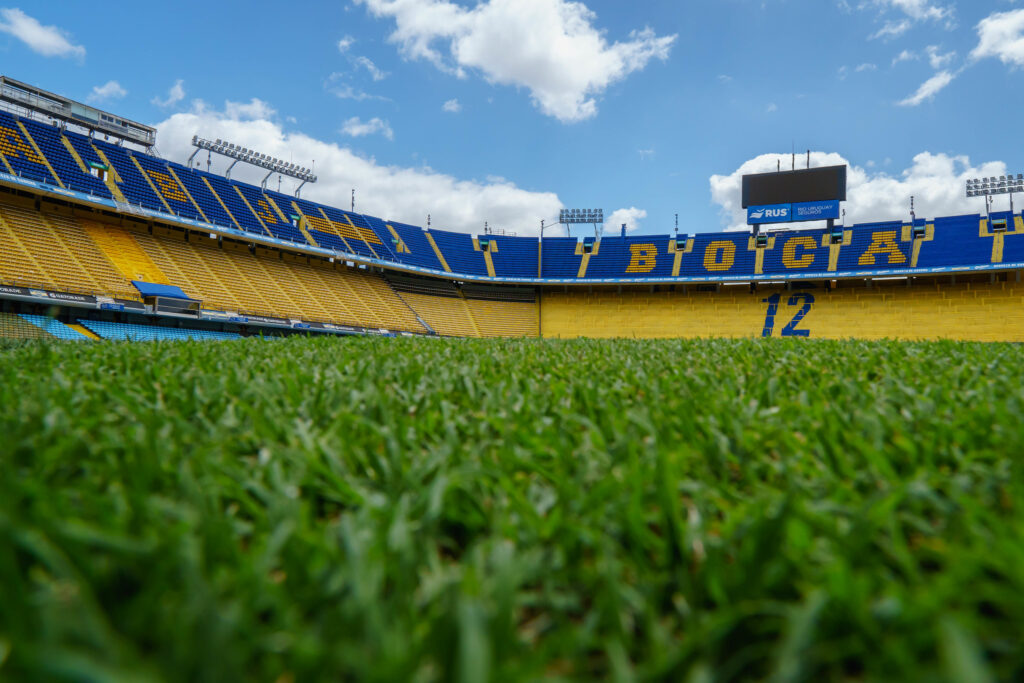Have you ever imagined walking through the kaleidoscopic streets of Caminito or experiencing the rich cultural tapestry of La Boca in Buenos Aires?
ExpatPathways brings you an essential guide to navigating these iconic neighborhoods, tailored for digital nomads, expats, and travelers eager to discover the heart and soul of Argentine culture.
Dive into our comprehensive insights, and get ready to uncover the historical charms and vibrant atmosphere that make Caminito and La Boca must-visit spots on your travel itinerary.
Are you prepared to let the allure of Buenos Aires transform your understanding of culture and history?
Caminito & La Boca (Buenos Aires): Everything You Need to Know Before Visiting
What are Caminito and La Boca?
Caminito, often one of the most photographed spots in the world, offers a unique charm with its cobblestones and brightly colored sheet-metal tenements, making it an iconic walkway in Buenos Aires.
This street museum stretches almost 150 meters, showcasing the city’s origins through its sinuous layout, which originally followed the course of a stream.
The area, known as “Puntin” in the Genoese dialect, reflects the strong Italian influence from the community that settled in the La Boca neighborhood.
Despite the stream drying up and the railway tracks falling into disuse, Caminito has transformed into a cultural and tourist hotspot. It gained further cultural significance as it inspired the famous tango “Caminito” composed by Juan de Dios Filiberto, although the lyrics reflect a pathway in Olta, La Rioja.
The street is named in tribute to lyricist Gabino Coria Peñaloza, further enhancing its cultural depth
Location of Caminito and La Boca
Caminito is situated in the vibrant La Boca neighborhood, near the Riachuelo and approximately 400 meters from the La Bombonera stadium, home to the Boca Juniors football club.
The path runs east to west, curving around a block bordered by Araoz de Lamadrid, Garibaldi, Magallanes, and Del Valle Iberlucea streets.
It was officially turned into a “street museum” and pedestrian zone in 1959, reflecting its transformation from a railway track to a cultural landmark.
Architectural and Cultural Significance
The wooden and corrugated metal houses facing Caminito adhere to the style of traditional “conventillo” tenements, which have historically housed the neighborhood’s immigrant population, particularly Genoese immigrants, since the late 19th century.
These houses are vividly painted, a practice popularized by notable local painter Benito Quinquela Martín, reflecting the neighborhood’s cultural vibrancy. Adjacent streets also feature these colorful tenements, often built on stilts to combat frequent flooding.
Caminito itself has become a cultural and tourist center, where visitors can enjoy tango performances on its cobblestones and explore a local crafts market offering paintings, souvenirs, and other artisan goods.
In 2022, Caminito underwent a significant restoration to revive the original colors chosen by Quinquela Martín. This project was meticulously based on historic photographs, including images published in National Geographic in 1959, ensuring the preservation of the artist’s original vision and color palette.

How to Get to Caminito and La Boca
Caminito is a vibrant street museum located in the La Boca neighborhood. The most accessible and quickest way to reach La Boca is by bus.
Several bus lines, including 20, 25, 29, 33, 46, 53, 64, and 152, service the area. Unlike the subway and train services, which do not extend into this part of the city, these buses provide direct access.
For safety reasons, it is advised to visit during daylight or early evening hours, as the area’s safety can diminish at night.
Why Should You Visit Caminito and La Boca?
- Caminito and its surrounding neighborhood, La Boca, are essential parts of Buenos Aires’ cultural and historical landscape.
- The area is a vivid testimony to the city’s development from the late 19th century and is a melting pot of cultures including Italian, Spanish, Swedish, and Creole influences.
- Besides the iconic Caminito with its picturesque buildings, La Boca offers numerous attractions like the Alberto J. Armando Stadium (La Bombonera), a revered site for football fans globally.
- The neighborhood also boasts various historical constructions, museums, parks, and a rich culinary scene featuring traditional cafés and “bodegones” (taverns established by immigrants decades ago).

Activities to Do in Caminito and La Boca
La Bombonera (Boca Juniors Stadium)
Don’t miss the chance to visit South America’s most iconic football stadium, La Bombonera. Known for its three-tier stand adorned in blue and yellow, and the vibrant atmosphere it hosts, the stadium is a must-visit for sports enthusiasts.
It houses the Boca Juniors museum and club premises. Note that the stadium is not always open for guided tours, so it’s advisable to check availability and book in advance if you want an inside look.
Museums
La Boca’s museums reflect the artistic prowess and inspiration drawn from the neighborhood and its history. Key places like Fundación Proa and the Benito Quinquela Martín Museum showcase art works, local history, and monumental architecture, offering a deep dive into the artistic heritage of La Boca.
Puente Transbordador Nicolás Avellaneda
The iconic Nicolás Avellaneda transporter bridge, a national historical monument inaugurated in 1914, and its successor, a modern structure that opened in 1940, are prominent features at the mouth of the Riachuelo.
These bridges connect the Avellaneda district and La Boca, featuring a central metal section and two nearly 50-meter-high towers, accessible via stairs and escalators.
Parque Lezama
Located in the neighboring San Telmo district, Parque Lezama is home to the National Historical Museum and is believed to be the site of Buenos Aires’ first founding by Pedro de Mendoza in 1536.
The park features sculptures, monuments, an amphitheater, and a viewpoint, all surrounded by lush gardens designed by European landscapers in the late 19th century.
Bars and restaurants
La Boca and Caminito offer a diverse culinary landscape, from traditional taverns influenced by Italian and Spanish cuisines to historic cafés that have been part of Buenos Aires’ gastronomic fabric for many years. Some of the most recommended are:
- Nápoles: Italian restaurant
- Bar Británico: Café and restaurant (bodegón)
- Doppelganger Bar: Signature cocktail bar
- Banchero: Pizza restaurant
- El Obrero: Restaurant (bodegón style)
- Café and Bar Roma: Café and bar
Walk through the streets
Exploring the streets of Caminito and La Boca is perhaps the most enriching activity. The area’s history and magic are best experienced by walking through its cobblestone streets, colorful facades, and listening to the sounds of tango and milonga.
Be sure to have your camera ready to capture the unforgettable scenes of your visit.

Last Considerations
Visiting Caminito and La Boca offers an unmissable opportunity to capture the essence of Buenos Aires, but it’s wise to time your exploration for daylight hours for safety.
Keep your camera or phone close and remain alert to protect against theft—a simple precaution that goes a long way. Before heading out, ensure to verify the opening hours and visitor conditions for the museums and Boca Juniors’ stadium, particularly if you’re planning to explore the club museum at La Bombonera.
ExpatPathways invites you to let the vibrant streets and rich history of Caminito and La Boca enrich your expat, digital nomad, or traveler’s experience. Will these colorful corners of Buenos Aires find a place in your heart?
(Featured Image Source: Sergio del Solar/flickr.com)


